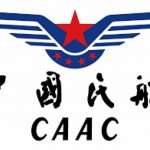ICAO encourages increased alignment of national aviation recovery efforts
IFA Comment: IFA believes that a fragmented approach has dogged air transport since the start of the pandemic. In such an international business as aviation there needs to be greater coherence, coordination and cooperation. IFA welcomes the work ICAO has dedicated to this aim.
Montréal, 22 September 2020 – Addressing recent European (EURNAT) and South American (SAM) Directors-General of Civil Aviation (DGCA) meetings, ICAO Secretary General Dr. Fang Liu reminded the national heads of civil aviation of the urgent need to more effectively align their pandemic-related response and recovery measures.
“COVID-19 has wreaked havoc on local and global air connectivity, and on the many countries and operators who made that connectivity possible,” Dr. Liu declared. “Your local economies and the world of air transport are highly dependent on governments aligning their CART-driven responses.”
The ICAO Council’s CART Report and related ‘Take-off’ guidelines for pandemic response and recovery are currently being employed by many States globally toward these alignment efforts, though in many cases the persisting variation in local pandemic status is making more extensive harmonization more challenging.
The ICAO CART Task Force, comprised of representatives of the currently-elected ICAO Council States, is presently reviewing a number of Take-off Guidelines proposed amendments and priorities as part of its upcoming CART Phase II deliverables, in advance of the Council’s upcoming 221st session (26 Oct–13 Nov).
“The effectiveness of CART alignment relies strongly on the regional coordination effectiveness achieved at the DGCA level,” Dr. Liu reminded her audiences, “and greater international support is still required to sensitize decision-makers, and to integrate the CART’s Take-off measures with the local economic reactivation procedures being explored by your States.”
Speaking to the attendees of the EURNAT meeting, Dr. Liu highlighted the regional collaboration now taking place on COVID-19 response between ICAO and the European Union Aviation Safety Agency (EASA) as an important step forward toward greater regional alignments.
In a similar vein, she also underscored the value and successes achieved as a result of the high levels of regional buy-in and participation by South American states in the ICAO SAM Office’s COVID-19 webinars and roadmaps for recovery.
She stressed to both audiences the importance of ICAO’s direct efforts, through CAPSCA and its work on Public Health Corridors, to set out a collaborative process with external “Validation Partners” on industry’s own CART implementation efforts, highlighting ACI and IATA’s participation.
Also highlighted in this context were the Global Implementation Roadmap and regional implementation plans which had been set out, in addition to the guidance, assistance, monitoring, and many other tools and resources which ICAO has placed at States’ disposal since the pandemic’s earliest impacts.
The Secretary General also recalled that the most recent ICAO State Letter on Public Health Corridors “provides extensive information to States on how to establish them, and important advice for your States on how to promote the mutual recognition of public health measures through multilateral agreements.”
Further updates were provided on the ICAO Universal Safety Oversight Audit Programme (USOAP), which Dr. Liu reported “has increased its off-site activities and corrective action plan assessments, including desk audits and off-site validations.”
In concluding, she underscored to the national aviation leaders that “ICAO will continue to do its best to bring you together and provide the guidance and tools to assist your efforts, but much relies on you and I have every faith in your commitments and capabilities.”
Dr. Liu’s remarks were delivered at meetings of the Directors-General of Civil Aviation on “Harmonized Regional Operational Guidance for the restart of Civil Aviation”, which took place on 17 and 22 September 2020 for the Europeans and South Americans, respectively.




